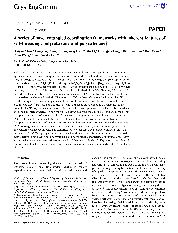摘要
Self-assembly of transition metal salts with long aromatic dicarboxylate ligands and N-containing ligands affords a series of entangled coordination frameworks based on different metal cores, namely [Mn-4(mu(2)-OH2)(2)(sdba)(4)(bpp)(4)] (1), [Mn-2(sdba)(2)(btb)(0.5)(H2O)] (2), [Mn-4(sdba)(4)(bim)(H2O)(4)]center dot 2H(2)O (3), [Ni(sdba)(bim)(H2O)(2)]center dot 2H(2)O (4), [Co-3(sdba)(2)(Hsdba)(2)(2,2'-bpy)(2)] (5) and [Ni-2(bpda)(2)(bim)(2)]center dot H2O (6) (H(2)sdba = 4,4'-sulfonyldibenzoic acid, H(2)bpda = 4,4'-carbonyldibenzoic acid, bpp = 1,3-bis(4-pyridyl) propane, btb = 1,4-bis(1,2,4-triazol-1-yl)butane, bim = 1,4-bis(imidazol-1-yl)butane, 2,2'-bpy = 2,2'-bipyridine). Their structures were determined by single-crystal X-ray diffraction analysis and further characterized by elemental analysis, IR spectra and TG analyses. Compound 1 is a peculiar 2D self-threading network containing unusual triflexural helical motifs, which can be rationalized as a 6-connected 2D 3(6)-hxl (hexagonal lattice) net with double edges. Compound 2 represents the first example of a 2D polycatenated framework formed by 1D quadruple chains, which could be considered as formed by interconnected 1D polyrotaxane columns involving the unusual [3]rotaxane components. Compound 3 consists of two interlocked 2D cage-containing frameworks and exhibits an unusual (2D -> 2D) parallel interpenetrating array with coexistence of polyrotaxane and polycatenane. Compound 4 is composed of two interpenetrating 2D loop-containing frameworks with 4-connected (2.6(5)) topology, and it can also be considered as being constructed by interconnected parallel 1D polyrotaxane chains. Compound 5 is comprised of two identical 2D hydrogen-bonded layers with 6-connected (2(2).4(8).6(5)) topology that are interpenetrated in a parallel fashion, resulting in a twofold interpenetrating net having both polyrotaxane and polycatenane characters. Compound 6 represents an unusual mode of interpenetration of two distinct 3D frames both with CdSO4 topology, which is still very rare in entangled systems. In addition, the magnetic properties of compounds 1, 3, 4, 5 and 6 are discussed.
